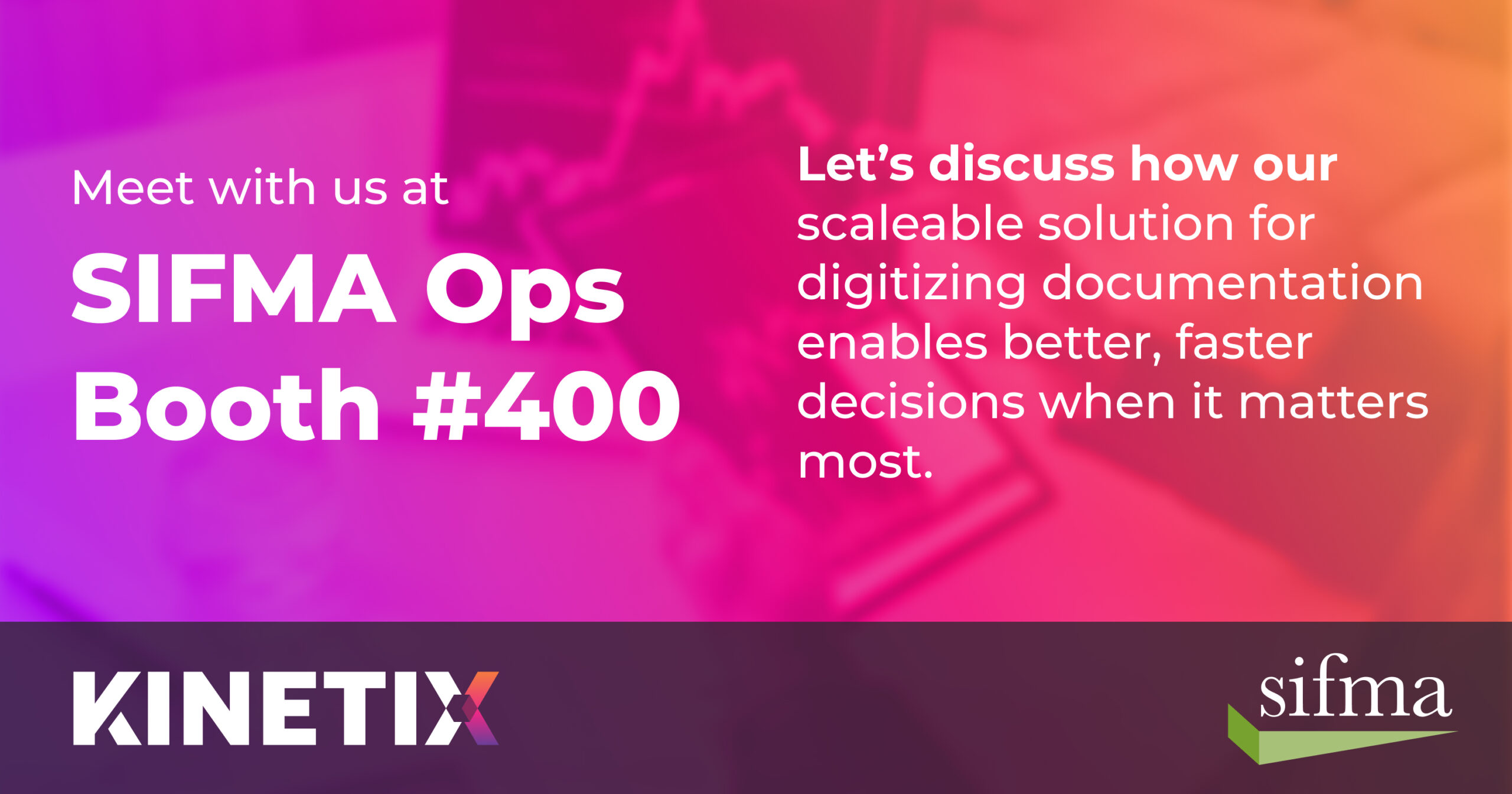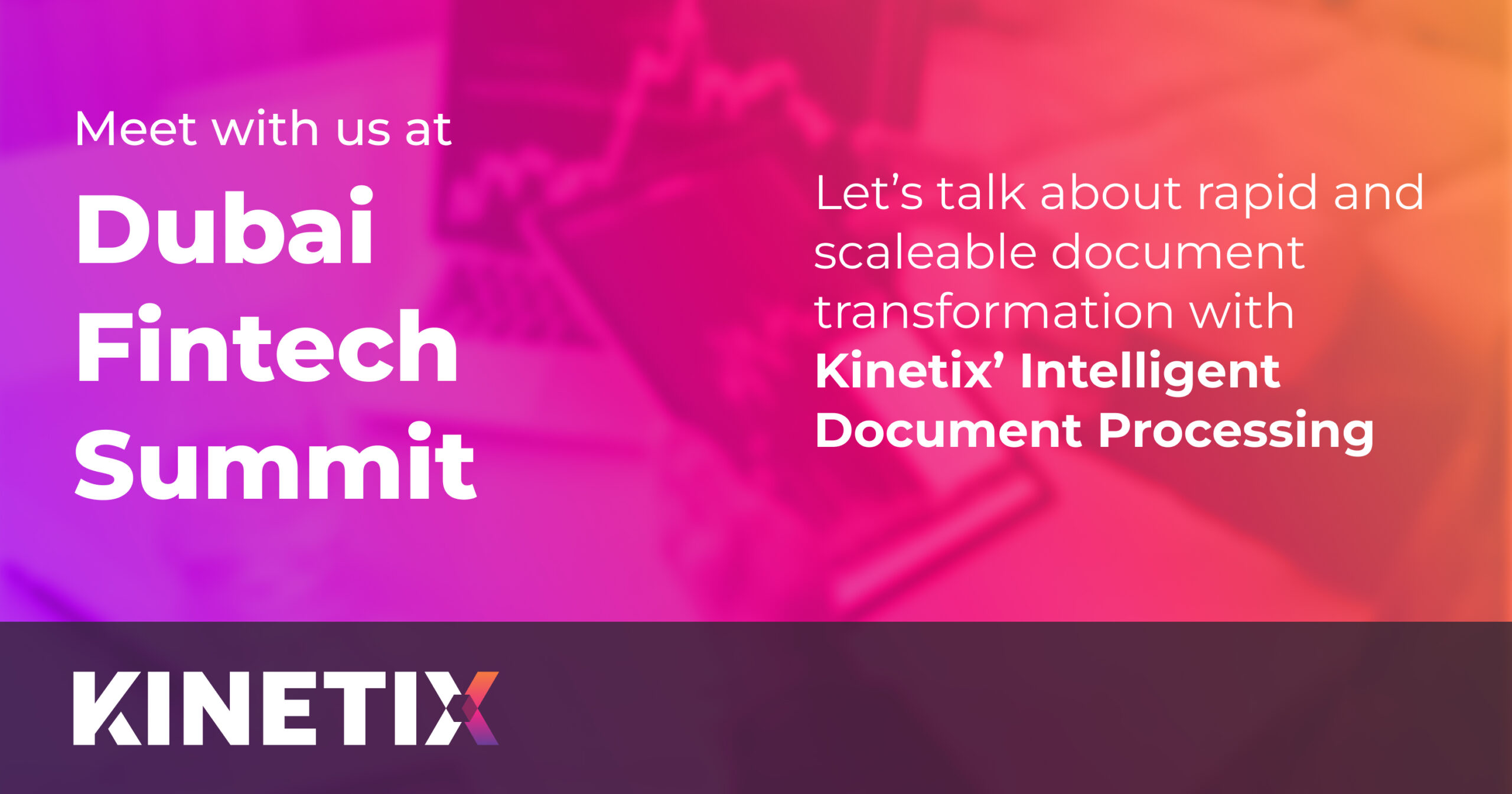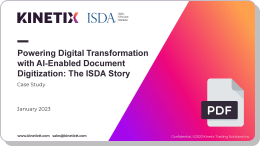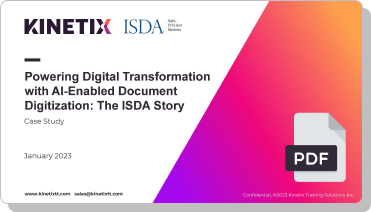All companies need to be smarter today to adapt to shifts in their market environment, pursue innovation and outperform competition. And for many, that means they need scalable solutions to surface the value in their enterprise documentation for better, faster, data-backed decisions. Today, teams struggle as information is in paper or PDF form, and the data within isn’t readily accessible in the structured formats they would like.
For banks or trade organizations (namely those who develop industry standards), digitizing content is often a core component to a robust digital transformation strategy. Countless data assets containing information that could enhance business performance or increase the efficiency of a process are trapped in unidentified or difficult-to-use sources, from non-machine readable formats to traditional paper. Furthermore, today’s content consumers, be they on the legal, compliance, technology, or end-user side, demand improved access and streamlined interfaces to access, navigate, and integrate content.
It is a daunting challenge that needs to be addressed along an enterprise’s transformation journey, and many fundamental business practices may have to be rethought and reshaped. But with the arrival of next-generation Intelligent Document Processing (IDP), it can also be surprisingly seamless and efficient. Imagine that all the information hidden away in your document library is suddenly easily accessible, searchable, connected and usable.
According to Deloitte, more than 80% of enterprise business data is still stuck in unstructured and unsearchable formats. Many organizations still rely on manual data entry to capture, tag, and extract analog information into digital form. It’s slow, subject to human mistakes and cost, and in doing so they also miss out on all the data insights that AI-powered extraction and enrichment can deliver. Those organizations that have already introduced automated digitization are likely relying on outdated, incomplete technology including OCR and RPA. Even the most popular systems simply turn information from printed to digital formats and then leverage rule-based processes, which are error-prone, complex to manage, expensive to maintain , and lack smarter AI that can adapt intelligently to new content.
It’s time to unlock the potential of next-generation software and give businesses the opportunity to turn hidden information into value. Many organizations are devoting more financial and human resources to deploy intelligent document processing capabilities. Success by forward looking organizations is driving confidence in a market expected to grow 70-80% over the next two years to US$1.1 billion. To maximize the benefits of digitization and minimize the short- and long-run costs, it is essential to pursue the transformation with a full understanding of what the latest IDP technology offers.
Powered by skills-based AI, which learns from human input and validation by knowledgeable subject matter experts (SMEs), IDP can automatically extract and structure data from complex, niche documents. Furthermore, it can enrich static content with, for example, tags, categories and relevant links to exterior sources that provide deeper context and meaning. All this data is then delivered in a visually compelling, organized way that helps to highlight valuable information and deliver it to the right people at the right time in the right context. Anything less means you are not getting the full picture of the rich, critical information contained in all those agreements, transactions, regulations, or standards. At Kinetix, we like to call it “Smart Documentation,” turning your documents into unexpected value.
Fortunately, today’s IDP technology allows business to extract information at scale, transforming troves of documents – from electronic formats like PDFs, Word files and spreadsheets to analog and paper-based documents – into structured and easily accessed content. The digitized content, significantly enriched by the AI, can be displayed on an intuitive platform, or delivered in a flexible way through an API to streamline processes, break down silos, and increase interoperability.
Another huge benefit is that IDP significantly cuts the cost of processing and enriching large volumes of unstructured data. The automated process saves manpower as humans only need to intervene when strictly necessary, leaving them free to focus on making good decisions and driving other aspects of an organization’s transformation or ongoing operations. Access to the enriched and interactive content – in new user-friendly documentation or other digital formats – is intuitive. Quality content can be consumed more quickly and efficiently. And with more complete, relevant information at the user’s fingertips at the right time, the business risk caused by gaps in data will be significantly lower.
Simply put, using the most advanced AI-based IDP possible makes not only technical sense but also commercial sense. Automated document digitization boosts data availability, accuracy, and interoperability, leading to success in reaching wider business transformation goals, from reducing risk, increasing process efficiency, to providing golden sources of truth. The first step of IDP is to digitize; the second, vitally, is to structure and enrich the data. It is during this second step that so much unexpected value is created – and where the secret sauce of IDP shines. By using domain SMEs to teach specific “AI skills” that are relevant to a particular organization’s operations, it is possible to extract business critical insights from the data and then present that in an intuitive, user-friendly way to the content consumer, be it a human or machine at the end.
Most organizations are tempted by inferior approaches to IDP, often coming with the requirement to spin up a digitization team (by taking resources away from other necessary functions), working with numerous vendors, and then investing months to implement the technology and processes. From a standing start, the compromised project is launched using a popular but out-of-date technology. The results are disappointing – it’s too slow, very expensive, and has low straight through processing rates.
Through Kinetix’ firsthand experience, we have seen the results of outdated approaches analyzed by the numbers. Anecdotally, we saw one single 10-page document cost $50,000 and 2 months to digitize and structure, with back and forth between project managers, numerous vendors and highly paid SMEs. We have seen it time and time again – once a digitization approach has been committed, it’s difficult to stop its downward spiral and many look to exit after several years.
Fortunately, there is no need to create a team from scratch or pull valuable knowledge workers away from other key tasks. Instead, digital transformation can be auto-managed by a fit-for-purpose and user-friendly piece of next-gen technology that integrates seamlessly into any existing ecosystem. Today’s most advanced IDP solutions automatically deliver the most comprehensive digitalization that sets organizations on the path to business transformation.
Whether you are at the start of your digitalization journey or well on the way using last-gen technology, IDP can be a key part of a transformation strategy. IDP allows organizations to bring relevant insights to the surface while also delivering efficiency, reduced risk, greater productivity and measurable cost savings.
Kinetix is leading the way in Smart Documentation solutions and Intelligent Document Processing (IDP), delivering AI-based services that transform data trapped in documentation into insights, while driving efficiency and reduced costs. For more information about Kinetix IDP, contact Mark Zurada at [email protected].














